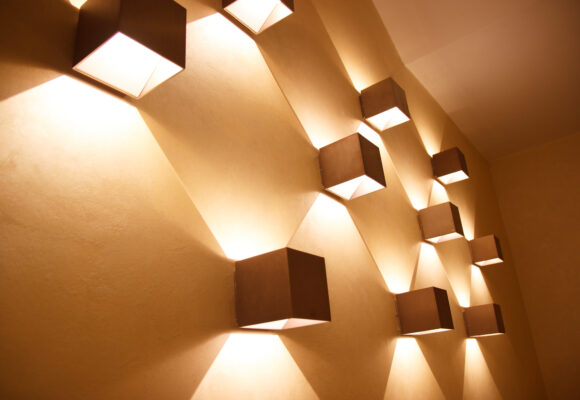Halogen lamps are gradually being phased out in many countries due to their energy inefficiency compared to newer lighting technologies like LED. Many countries have implemented regulations to encourage the adoption of more energy-efficient lighting options, leading to a decline in the production and availability of halogen lamps.
LED lighting, with its superior energy efficiency and longevity, is becoming the preferred choice for consumers and businesses alike, signaling the eventual end of halogen lamps in the lighting market. Below is a comparison of these two types of lighting, along with an equivalent LED wattage to halogen chart and a comparison of lumens.
Halogen Lighting
Halogen lights are a type of incandescent lamp that uses a tungsten filament, just like traditional incandescent bulbs. However, they contain halogen gas, which allows the filament to last longer by redepositing evaporated tungsten back onto the filament.

Halogen Advantages
- Colour Rendering: Halogen lights have excellent colour rendering properties, providing a warm and natural light.
- Dimmability: Halogen bulbs are fully dimmable, allowing for customisable lighting levels.
- Instant Brightness: Halogen bulbs reach full brightness instantly when turned on.
Halogen Disadvantages
- Energy Inefficiency: Halogen bulbs are less energy-efficient compared to LEDs, producing more heat than light.
- Short Lifespan: Despite improvements over traditional incandescent bulbs, halogen bulbs still have a shorter lifespan compared to LEDs.
- Heat Emission: Halogen bulbs emit a significant amount of heat, which can be a concern, especially in enclosed fixtures.
LED Lighting
LED (Light Emitting Diode) lights are semiconductor devices that produce light when an electrical current passes through them. LEDs have gained popularity due to their energy efficiency and longevity.

LED Advantages
- Energy Efficiency: LEDs are highly energy-efficient, consuming significantly less power than halogen bulbs.
- Long Lifespan: LED bulbs can last up to 25 times longer than halogen bulbs, reducing the frequency of replacements.
- Low Heat Emission: LEDs produce minimal heat, making them safer and more suitable for enclosed fixtures.
LED Disadvantages
- Initial Cost: LED bulbs tend to have a higher initial cost compared to halogen bulbs, although they often provide cost savings over time due to their longevity and energy efficiency.
- Colour Consistency: While LEDs offer a wide range of colour temperatures, achieving consistent colour can be a challenge with some LED products.
Equivalent Halogen to LED Wattage Chart
| HALOGEN | LED |
| 25W | 3-4W |
| 35W | 4-5W |
| 50W | 6-8W |
| 75W | 9-12W |
| 100W | 12-15W |
Comparison of Lumens
Lumens measure the brightness or light output of a bulb. When comparing halogen and LED bulbs, it’s essential to consider the lumens rather than just the wattage, as LEDs produce more lumens per watt compared to halogen bulbs.
For example a 50W halogen bulb typically produces around 800 lumens. An equivalent 6W LED bulb can produce the same amount of lumens or even more, depending on the efficiency of the LED.
Conclusion
While both halogen and LED lights have their advantages and disadvantages, LED lighting generally offers superior energy efficiency, longer lifespan, and lower heat emission compared to halogen lighting. Although LED bulbs may have a higher initial cost, their long-term benefits often outweigh the initial investment, making them a more cost-effective and environmentally friendly lighting choice. When replacing halogen bulbs with LEDs, it’s essential to consider the equivalent wattage and lumens to ensure you achieve the desired brightness and performance.




 No products in the basket.
No products in the basket. 
